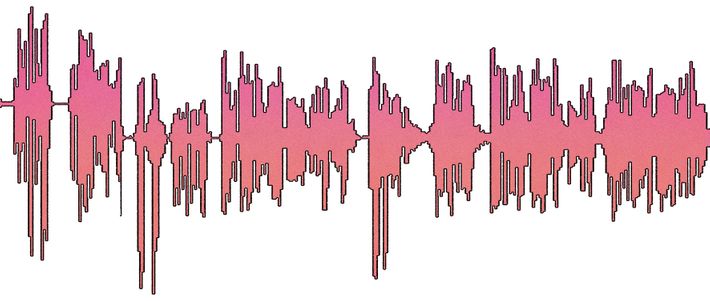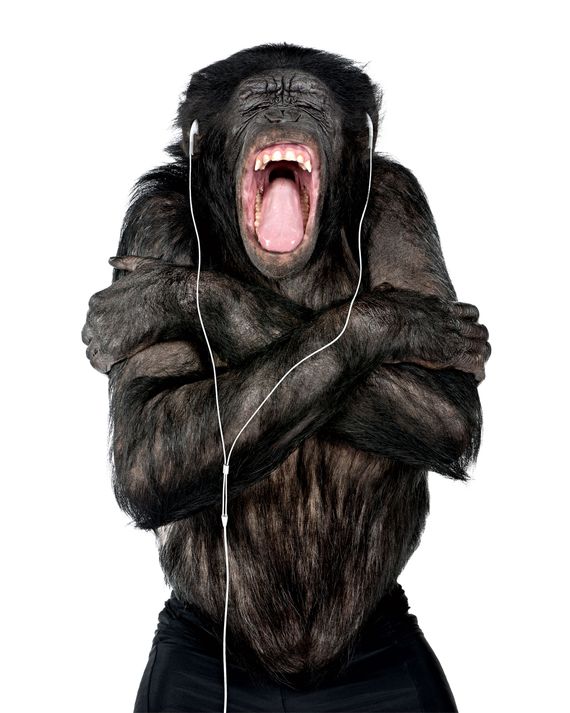
When you first heard about podcasts, do you remember how excited you weren’t? Do you recall the first person who said, “Did you know you can now download audio files of people talking?” To which you might have replied, “Talking about … what?” To which they might have replied, “About … anything!” — at which point you realized that podcasts seemed like radio but more amateurish, which wasn’t the most compelling sales pitch.
I’m going to guess you’ve listened to a podcast since then, maybe even a few. And I’m going to guess that you’ve even become obsessed with one or two. There are now an estimated 660,000 podcasts in production (that’s a real number, not some comically inflated figure I invented to communicate “a lot”), offering up roughly 28 million individual episodes for your listening enjoyment (again, a real number; yes, someone counted). The first two seasons of the most popular podcast of all time, Serial, have been downloaded 340 million times. In podcast lore, the form was born in 2004, when the MTV VJ Adam Curry and the software developer Dave Winer distributed their shows Daily Source Code and Morning Coffee Notes via RSS feed. Or maybe it was really born in 2005, when the New Oxford American Dictionary declared podcast the Word of the Year. Or maybe it was born in 2009, when abrasive stand-up Marc Maron started his podcast, on which he interviews fellow comedians and other celebrities in his California garage, debuting a disarmingly intimate and bracing style that culminated in a conversation with Louis C.K., named by Slate four years later as the best podcast episode of all time. Or maybe it was born in 2015, when people realized that Joe Rogan, a former sitcom star and MMA enthusiast, had a podcast, The Joe Rogan Experience, which started, in his description, as “sitting in front of laptops bullshitting” and was now being listened to by 11 million people every week. Or maybe podcasts were born way back in 1938, when Orson Welles proved that a seductive voice could convince you of anything, even the impending arrival of aliens. Or maybe they weren’t born until February of this year, when the music-streaming company Spotify bought the podcast-production company Gimlet Media for a reported $230 million, enough money that even the most skeptical observers had to acknowledge that targeted nuggets of radio on demand might be the future of media and not just a quaint variation on its past.
Perhaps it’s tricky to pinpoint the exact arrival of podcasts because they’ve spent a decade in a state of perpetual arrival. In any case: They’re here. What’s more, these humble chunks of audio have emerged as the most significant and exciting cultural innovation of the new century. In an age when we were promised jet packs, or at least augmented-reality goggles, it turns out what we’ve really been craving is the companionship of human voices nestled in our ears. These voices provide us with information, yes, but also inspiration, entertainment, enlightenment, emotional engagement, companionship, and, above all, a sense that, in even our most arcane obsessions, we are not alone.
In hindsight, the elements that made the podcast revolution inevitable (they’re cheap to make and easy to distribute) are the exact ones that made them seem the opposite of revolutionary when they first appeared. The portmanteau podcast, a mash-up of iPod and broadcast coined by the journalist Ben Hammersley in The Guardian in 2004, suggests that podcasts rode in on the coattails of the digital-music revolution. Their development since has been a case study in sheer, unfettered experimentation — the gleeful result of the kind of widespread, wiki-sourced evolution that can happen only when no one is paying attention or, at least, no one with enormous bags of money is paying attention. Podcasts have one very obvious progenitor — radio, to a surprising degree the public-radio program This American Life — while being the brainchildren of thousands of disparate inventors. There are no editors to convince, no producers to pitch, no green lights to be green-lit. To make a podcast, all you have to do is buy a mic, install a recording program on your laptop, and start talking.
As for what people talk about — well, anything they’re obsessing over, from classic board games to the state of our political discourse to organic-farming tips to D-list celebrities to every single episode of Buffy the Vampire Slayer. Your favorite subgenre of podcast likely depends on your personality and how exactly you prefer to spend those moments when you can’t do anything else. Maybe you favor the talk-show podcast, such as Pod Save America, in which people interview each other (or, less frequently, one person talks directly to you) about contemporary events. Or maybe you prefer narrative podcasts, which methodically explore a single story over a full season, such as the Watergate scandal in Slow Burn. Perhaps you’re more of a talk-radio-style-podcast fan, drawn to shows in which strong personalities, people like Ben Shapiro, Preet Bharara of Stay Tuned, or Aminatou Sow and Ann Friedman of Call Your Girlfriend, advance a worldview through unbridled commentary and occasional interviews with like-minded guests. Or maybe you’re drawn to the roundtable podcast, shows like Slate’s Culture Gabfest or Extra Hot Great, in which smart people chatter about smart things (and, just as delightfully, dumb things) while you get to ride shotgun. There are useful industry-expert podcasts like Scriptnotes (hosted by two successful Hollywood screenwriters) that provide an unfiltered view into a particular business. There are fully fictional podcasts, such as Homecoming (adapted into an Amazon TV show starring Julia Roberts), that offer the pleasures of — and occasionally struggle to escape the stilted sound of — old-time radio dramas. (Voice acting is hard, kids.) There are podcasts that drill down on one simple question, such as Vulture’s own Good One, in which each episode is devoted to a different comedian detailing how he or she wrote his or her very best joke. And, of course, there are true-crime podcasts — so many true-crime podcasts. So, so many true-crime podcasts.
The most instructive examples of the state of the art, though, are those delightfully unclassifiable podcasts, the ones that represent the medium’s potential to grow beyond simply digital talk radio. These are shows like Everything Is Alive, an unscripted interview program produced by Ian Chillag, in which the subject of each interview is an inanimate object (a pregnancy test, a can of generic cola). Or Jon Mooallem’s Walking, which is part podcast, part performance-art project, and consists of hour-long recordings of his walking in the woods. (No talking, just walking. For real.)
Whatever your personal preference, it’s become clear that podcasts are particularly well suited to cater to personal preferences. The form, which once seemed like it might not be particularly good at anything, now seems to be good at nearly everything. And podcasts increasingly are learning to do things no medium has done before. If podcasts sprang forth from radio, then started to borrow from written essays, novels, movies, and TV, they are now learning to be podcasts in all that entails. To understand where they’re headed, however, it helps to start with how they ended up sounding the way they do right now.
There’s an episode of the podcast Without Fail that’s titled “The Man Who Launched a Thousand Podcasts.” The show is hosted by Alex Blumberg, an ex–This American Life producer and co-founder of Gimlet Media, and he’s interviewing Ira Glass, his ex-boss and, of course, the creator and host of This American Life. The two of them personify two distinct eras in podcast evolution. When Blumberg left This American Life in 2014 to start Gimlet, he bet on a future in which podcasts were not just a curiosity but a popular and increasingly lucrative emerging cultural form. And Glass, his mentor, is arguably (or, you could say, inarguably) the spiritual godfather of podcasts, even though he and his show remain tethered to public radio. (TAL has been available in podcast form since 2006.)
Not every current podcast sounds like a TAL spinoff — some sound like drive-time radio shows, or audition reels for aspiring shock jocks, or lively arguments among friends over beers at a favorite local bar, or the monologues of rambling relatives at endless family dinners, or the mumbled and strangely compelling musings of people confined to padded cells — but the distinctive TAL aesthetic, which has proved both adaptable and resilient, has emerged as the sound of the podcast revolution. You know the style: the charming, earnestly inquisitive host; the narrative eddies and switchbacks; the hems and haws; the “tape everything” credo (by which you air not only the interview and the interview outtakes but the producer and the host discussing the interview outtakes and why they out-took them); the jangly musical interludes; the welcoming fireside tone. It’s a style that prizes authenticity over authority, a purposeful antidote to the traditional newscaster’s drone. It suggests a wide-open eye avidly searching the world for wonder under an ever-so-slightly arched eyebrow. It’s the sound we’ve come to think of when we think of how a podcast sounds.
The most obvious reason TAL casts such a long shadow over the podcast landscape is that so many of its distinguished alumni (and current practitioners) produce the most innovative podcasts. This includes Sarah Koenig and Julie Snyder at Serial, Brian Reed (and Julie Snyder) at S-Town, Blumberg at Gimlet, and a diaspora of on- and off-air talent spread across several influential companies. It’s not surprising that a decade spent crafting audio stories for radio should pay off in this new medium. But this tone, as it exists now in podcasts, did not arrive instantaneously or fully formed. It’s the product of hundreds of small revelations people had as they figured out what exactly podcasts could do that radio could not.
The most popular current podcasts often bear the imprint of their distinctive origins. 2 Dope Queens, with Phoebe Robinson and Jessica Williams, went from a live show to a podcast to an HBO television show and was born from the pair hosting a comedy night, so their podcast has the loose, jocular, in-the-room feel of a sprawling, two-headed stand-up set. Marc Maron had two failed radio shows at Air America, and another scuttled online show, when WTF was born: He and a producer would sneak into the Air America studios after-hours, smuggling their guests upstairs aboard the freight elevator. No wonder the show sounds like a mash-up of pirate radio and personal diary — its origin story contains a bit of both. Dan Taberski’s breakout podcast, Missing Richard Simmons — which follows his personal quest to determine whether Simmons has in fact disappeared and, if so, why — started as a film documentary. When Taberski was well into the project, a podcast-production company convinced him that his tale was perfectly suited to a podcast, partly because it would benefit from an episodic structure and partly because his story was, in essence, about his own obsession, which is excellent podcast fodder. “It was super-personal and partially about me and why I couldn’t let it go,” says Taberski. “I wasn’t necessarily happy about inserting myself into it. But at one point we were doing edits and my producer looked at me and said, ‘Taberski, you realize this is about you?’ And I was like, ‘Goddamit.’ ”
A similar moment marked the development of Serial. When it debuted in 2014, even its makers weren’t sure exactly what kind of show it would become. Both came from TAL, but they had to reorient their thinking around an extended story told week to week, in chapters, in real time.
Koenig first thought of it as an audiobook. But producer Snyder recalls listening to an edit of the second episode with Koenig and another TAL producer, Nancy Updike, and being dismayed that the installment, which focused mainly on the relationship between two characters, felt so flat. At one point, Updike asked, “Where’s the hunt?”
From that question, Snyder and Koenig realized that Serial was not about the murder victim or the accused murderer but Koenig herself. “That was the aha moment,” says Snyder. “No one’s doing anything in this story except for Sarah. Sarah is the protagonist.” From then on, they began to think of the show not as a radio documentary or an audiobook but an episodic TV show, in which the audience follows one person’s quest through a series of encounters. This, not incidentally, is when they decided on another podcast innovation: borrowing the convention of a “Previously On” roundup to start each episode.
When Snyder moved on to S-Town, she and her co-producer and host, Brian Reed, had a different revelation. This show wasn’t radio or TV. It was a novel. Or at least it should be novel-like. S-Town was born when a random person named John B. McLemore called Reed out of the blue with a tip about an overlooked murder. But the heart of the story, it turned out, was McLemore himself. In crafting the show, Reed and Snyder spent a lot of time discussing the novel Stoner, a propulsive portrait of a peculiar personality, and imagining how they might borrow from its structure.
They began privately referring to the podcast as a “nonfiction audio novel” until they realized that neither of them was sure exactly what that meant.
But as Reed explained during an appearance on the Longform podcast, “One of the conventions of radio is that you can’t rewind it.” As a result, he says, a certain didacticism is required to tell a story, since you have to constantly warn the listener when you’re digressing or heading off on an unexpected tangent. “Julie was saying it would be nice if we could let things breathe a little bit,” Reed recalls. In its elliptical structure, its carefully crafted metaphorical resonances, its finely drawn characters, and the cumulative effect of its expert scene building, S-Town adopts a novelistic approach infused with the intimacy of an oral tale. One critic applied the label “aural literature.” When it arrived, S-Town sounded like no podcast that had come before. It was also downloaded more than 40 million times that year.
In their interview on Without Fail, Blumberg and Glass don’t talk much about the future of podcasts or really about podcasts at all. But Blumberg does ask Glass if he ever steps back and considers what, two decades later, TAL begot. Glass recalls having the feeling way back in 1995 while working in public radio that there is a thing radio can be great at — telling stories — yet nobody was using it for that purpose. Radio could provide news, sure, it could play music, it could transmit a voice barking opinions, but it wasn’t really telling human stories, let alone finding innovative ways to tell them. “It’s as if violins existed but nobody played violin music on them, just tried to make them sound like something else,” Glass says. “So you say, ‘You know what would be really great? If you take the bow across the thing. It’s really pretty! And finger it here — it’s amazing! Why don’t people do this?’ ”
It’s an apt analogy and, in the era of podcasts, one you can take even further. When Glass launched TAL on radio, it was as if he had imagined violin music and figured out how to play it on a banjo; then, ten years later, violins were invented. With podcasts, that music has found its perfect instrument.
In the beginning, there was little money to be made in podcasts, so no one was making podcasts with the intent of making money. People made podcasts because there was something in the world they found interesting and they had a hunch that someone out there might find it interesting too. As a medium, podcasts have thrived because they intrinsically deliver one thing the internet and all its attendant gizmos haven’t proved to be very good at: intimacy. Social media, which arrived in our lives around the same time as podcasts, had been heralded as a breakthrough in global connection, but it has become a machine that manufactures discontent. Take a look at your Twitter feed. It is, by literal design, a great leveler: a cacophonous conversation with all the humanity drained away. The Nobel Prize–winning biologist tweets next to the random anti-vaxxer who tweets next to a Russian bot spreading disinformation. Facebook is worse. The connection promised by social media turned out to be an algorithmic ritual of posting, swiping, scrolling, and liking.
Then there are podcasts: cheap, niche, idiosyncratic, weird, and highly personal. In their myriad varieties, podcasts have emerged as an audio analogue to the spirit of the early internet, Internet 1.0, the version that promised to provide a platform for every manner of obsession, no matter how specialized or obscure. But podcasts have an additional appeal — they take that obsession and whisper about it in your ear in the real voice of an actual human.
The first person who ever tried to turn me on to podcasts — back when my initial reaction was “Why would I listen to podcasts? I don’t even listen to the radio” — was a friend of mine who, for medical reasons, had been confined to intermittent bed rest. She’d become addicted to podcasts. She loved them precisely because they could so comfortably colonize her mind. Podcasts were constant company, audio portals into unexpected worlds. She’d realized that the experience of podcasts is fundamentally different from being Extremely Online. No one listens to a podcast and comes away feeling agitated and slightly guilty, the way you feel after an hour on Facebook. If the internet is increasingly like a seedy business district you visit reluctantly then regret, podcasts are an invitation you extend to another human being to hijack your consciousness. (The extent to which she persuaded me is evidenced by the fact that — full disclosure — I have also discussed developing a podcast.)
Radio used to do that, sort of, sometimes, but podcasts introduced portability, accessibility, and a nearly endless selection of subjects on demand. And thanks to the hothouse strangeness of podcast evolution, the hits of the medium are nearly impossible to predict, let alone replicate. Could you have guessed that the breakout podcast of a given year would feature a former Daily Show producer’s compulsion to find out whether Richard Simmons had disappeared? Or that the animating appeal of the true-crime genre would not be the details of the crimes themselves as much as a podcast’s ability to foreground its host as she puzzles through the investigation? Comedy was an early driver of podcasts because comedy is fundamentally about the pleasure of listening to funny people talk. It’s also pleasurable, podcasts reminded us, to listen to experts talk. Also panels of pop-cultural mandarins. Also famous people, who for one reason or another have proved exceedingly willing to reveal themselves to an unprecedented degree once their lips are only inches from a microphone.
The one constant, though, through all the standout podcasts is that notion of obsession and connection. Freed from the constraints of attracting a mass audience, podcast creators double down on their enthusiasms and invite you, the listener, to come along. It’s a refreshingly democratic medium that, not incidentally, is driven by distinct personalities. Dan Taberski has a background in television, and he realized early on with podcasts that a major difference is “it’s your voice. It really is you. There’s no way around it.” This combination of distinct voices dwelling on personal enthusiasms is addressing a collective desire we didn’t even know we had.
In a digital world in which we crave human contact so badly we’re willing to listen to ASMR YouTube videos by the millions, to hear people whisper gibberish and tickle microphones with feathers to provoke some kind of physical sensation in us, is it any wonder that the notion of a soothing voice in our ear for an hour has proved to be so popular? Technology makes podcasts possible, but the experience of consuming podcasts is an oasis from our indentured interaction with screens and passwords and keyboards. Podcasts appeal to the twin modern manias for constant enrichment and constant escape. Despite their low-tech origins, we should never have been surprised at podcasts’ modern allure. They’re instant company with interesting people. What could be more exciting than that?
Big Pod’s Big Players
A guide to a few of the medium’s interconnections.
By Nick Tabor and Boris Kachka
Alex Blumberg
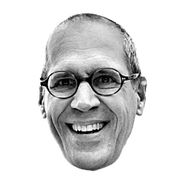
Worked on This American Life and Planet Money before launching Gimlet in 2014. Spotify acquired Gimlet for $230 million in February. Gimlet poached the founders of Reply All from WNYC in 2014.
Adam Davidson

Of Planet Money; now making a show for Luminary.
Ira Glass
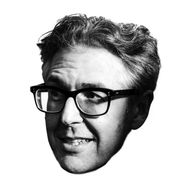
Started proto-podcast This American Life in 1995.
Sarah Koenig
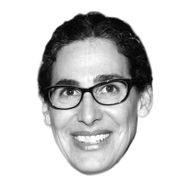
Former This American Life producer behind Serial.
Nishat Kurwa
Currently oversees Vox Media’s growing podcast empire, now over 75 shows strong.
Max Linsky

Longform co-founder co-founded Pineapple Street Media in 2016.
Hernan Lopez
A former longtime Fox executive, Lopez founded Wondery in 2016 with funding from his old employer. Has since launched IP-friendly hits like Dirty John and Dr. Death.
Marc Maron

Makes WTF, whose archives live on Stitcher Premium.
Roman Mars
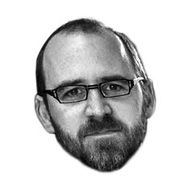
Launched the podcast collective Radiotopia in 2014, bringing with him his show 99% Invisible. WBEZ gave the world both This American Life and Roman Mars. Love + Radio is moving to Luminary this year.
Leslie Merklinger
A veteran of the Canadian television industry. Joined the CBC to launch its podcast division in 2015. Built a successful podcast portfolio that mixes true crime, heartwarming shows, and grand experiments.
Leon Neyfakh
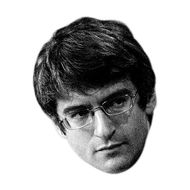
Created Slow Burn in 2017; In 2018, Luminary recruited him to leave Slate and Slow Burn behind and create a similar show, Fiasco.
Sim Sarna
Former independent film producer turned podcast co-host with Anna Faris. Recently founded Unqualified Media off the strength of that podcast.
Julie Shapiro
Manages the creative vision of Radiotopia as executive producer, bringing in shows like Everything Is Alive and Ear Hustle.
Bill Simmons

Created the Ringer in 2016. Simmons signed up to make a show for Luminary.
Moses Soyoola
Former executive at Panoply. Now the general manager of Endeavor Audio, new division under Endeavor (parent company to WME) aimed at growing the podcast market through deals with talent like Rami Malek and Dick Wolf.
Julie Snyder

Former This American Life producer behind Serial and S-Town.
Jesse Thorn

Runs Maximum Fun, which makes Bullseye for WNYC; helped Marc Maron start WTF in 2009.
Lisa Tobin
Public radio staffer turned news podcast doyenne. Joined the New York Times to form its audio department in 2016, giving us The Daily barely a year later.
Jacob Weisberg

Left Slate Group to co-found Pushkin with Malcolm Gladwell in 2018. Weisberg and Gladwell have reportedly signed up Michael Lewis to launch a new podcast, Against the Rules.
Jenna Weiss-Berman

Of The Moth and WNYC’s Death, Sex & Money; co-founded Pineapple Street Media in 2016.
The Um-Busters
Anonymous podcast producers share their tricks.
1. “Vocal filler — um and ah sounds — makes a recording sound natural. You have to cut some ums, though, to help things flow. Doing it too much can make a speaker sound clipped or robotic, so I cut maybe 65 percent.”
2. “A lot of technical problems can get in the way when you’re recording: bad mics or loud air conditioners. Sometimes you’re working that out in front of a VIP who doesn’t have much time to give you. I once held a mic up to Trevor Noah for an hour and a half.”
3. “With media-trained interviewees who talk in complete, polished sentences, I rarely cut actual words. But with off-the-street interviews, I sometimes cut whole tangents.”
4. “A recording has a lot of pauses or hesitation. I adhere to the Roman Mars rule: If you cut a useless minute and 100,000 people listen, you’ve saved 100,000 minutes for people. You’re a hero.”
5. “This might be too specific to the show I work on, but one day I saw a bunch of dead bodies and it changed the way I think about my own.”
—Nicholas Quah
Full Disclosure
New York has also joined the world of podcasting. From 2015 to 2017, we partnered with Panoply to create three shows on television, food, and sex. On Vulture, we currently have two shows made in partnership with HeadGum: the long-running Good One, in which Jesse David Fox interviews comedians about a single joke, and What the Tuck, a recap show about RuPaul’s Drag Race that has very quickly found a big audience. Last fall, we created an in-house podcast, 2038, a limited series about the near future, and in collaboration with Gimlet Media, we launched a weekly show, The Cut on Tuesdays. And in the spring we will debut a new show — Tabloid — in partnership with Luminary.
*This article appears in the March 18, 2019, issue of New York Magazine. Subscribe Now!


